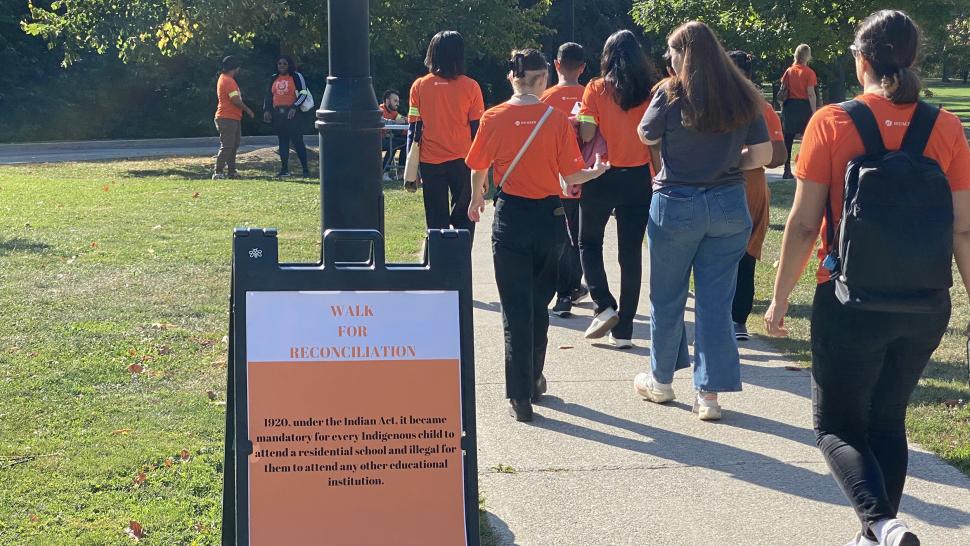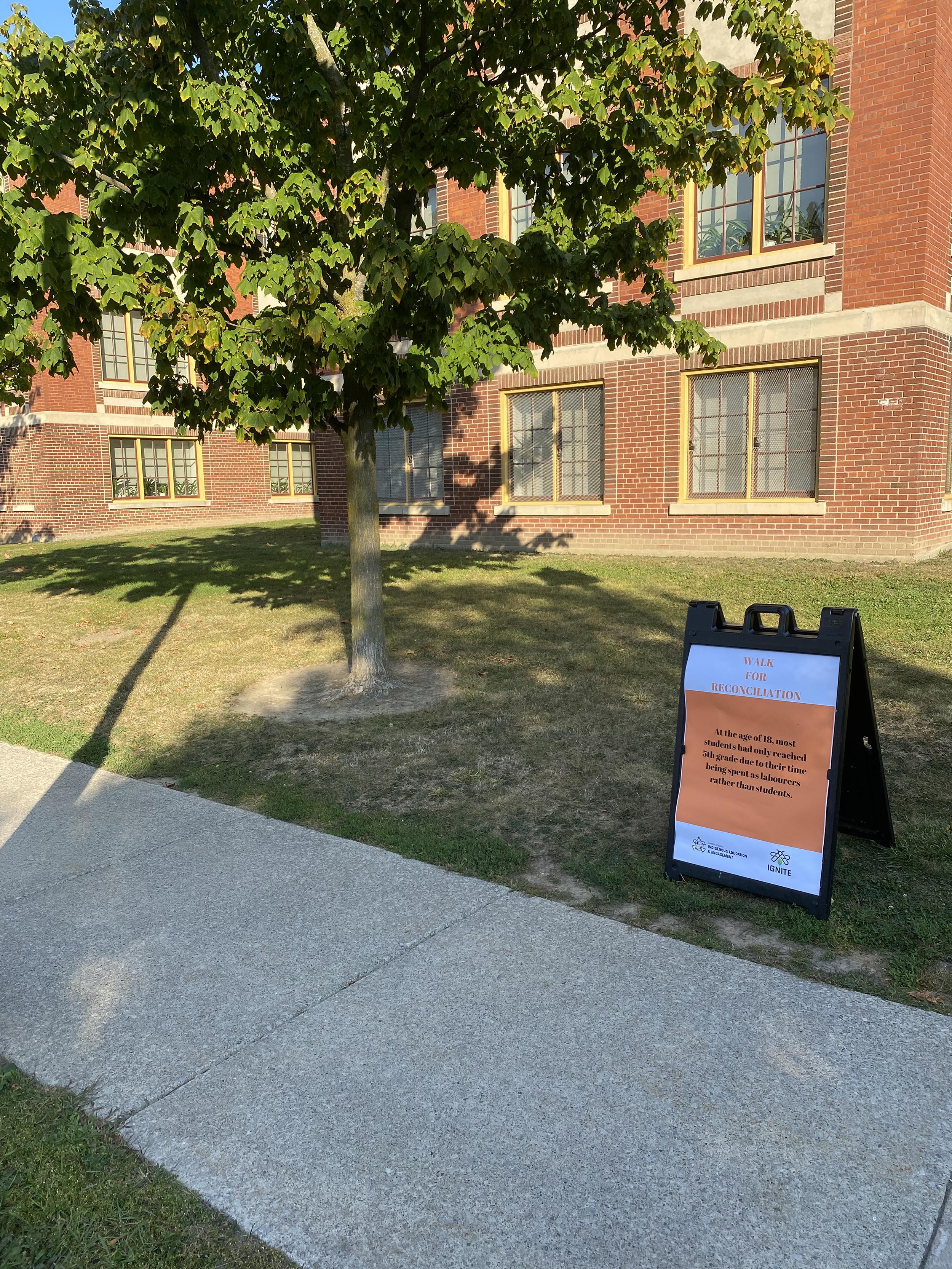
Those participating in the Walk for Reconciliation at Lakeshore Campus would have noticed the 10 large signs posted along the 1.5 kilometre route that looped around the college property.
Kaitlyn Nicole Chapman, Indigenous community engagement coordinator with Indigenous Education and Engagement, said the signs contained facts and were designed to combat misinformation and falsities about the Indigenous community and the terrible legacy of residential schools.
Chapman shared a story about a person telling her they weren’t worried about what happened at residential schools as that was more than 100 years ago. As Chapman notes, there are more than 80,000 residential school survivors still alive today and the last residential school closed in 1996.
“The hope is that people will read the facts and have empathy for the victims and those who survived the horrors of the residential school system,” said Chapman. “These facts really relate to the truth in Truth and Reconciliation as there are a lot of mistruths out there. We talk a great deal about Truth and Reconciliation but to reconcile we must understand the truth.”
“We want to provoke emotion and, while it might be difficult to hear or read these facts, imagine what it would be like to an individual who went through this system and, like many of the children, didn’t get to come home,” Chapman continued.
Here are the facts from the Did You Know? signs:
• The Mohawk Institution was the closest Residential School to Humber College at 107 k.m. This was the first residential school to open in Canada.
• In total, more than 130 residential schools operated in Canada between 1831 and 1996. The last Indian Residential School, located in Saskatchewan, closed in 1996.
• To date, more than 1,800 confirmed or suspected unmarked graves have been identified.
• Approximately 80,000 residential school student survivors are still alive today.
• In 1920, under the Indian Act, it became mandatory for every Indigenous child to attend a residential school and illegal for them to attend any other educational institution.
• How old were the children who attended? Children between the ages of 4-16 attended Indian residential school.
• Sir John A. Macdonald authorized the residential school system to rid the "Indian problem."
• More than 6,000 students are known to have died, but the number is estimated to be in the 15,000 to 25,000 range.
• At the age of 18, most students had only reached 5th grade due to their time being spent as labourers rather than students.
• Tuberculosis was the top cause of death in Residential Schools due to the over capacity of sick students and neglect of medical attention.

At North Campus, Humber has installed two new ground murals to symbolize the College’s commitment to equity, diversity, inclusion and belonging. One is for Every Child Matters and was created as a reminder of the tragic history of the residential school system and the treatment of Indigenous people.
Humber is commissioning a sculpture for Lakeshore Campus to honour the Missing and Murdered Indigenous Women, Girls, and Two Spirit People.